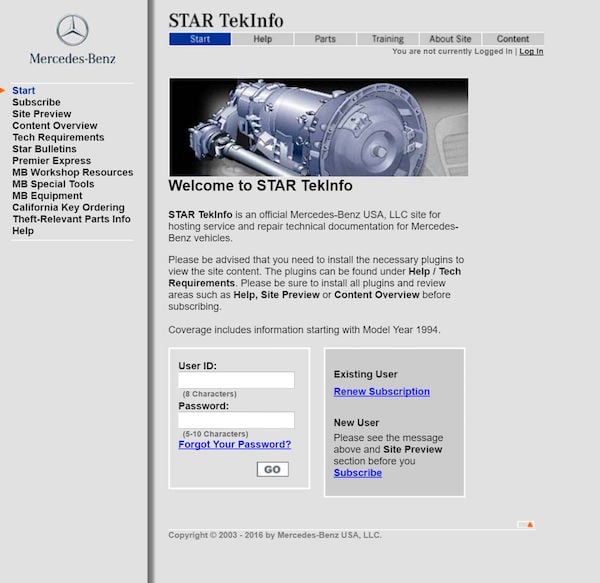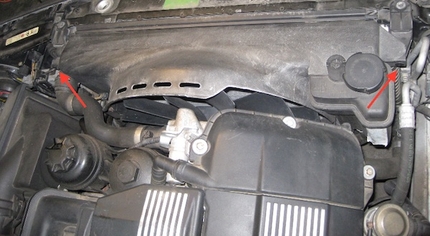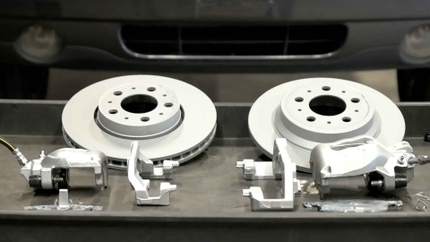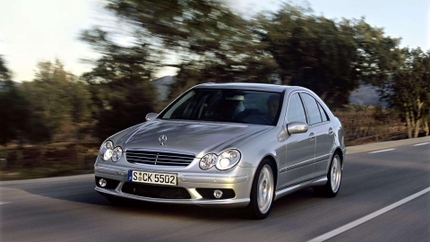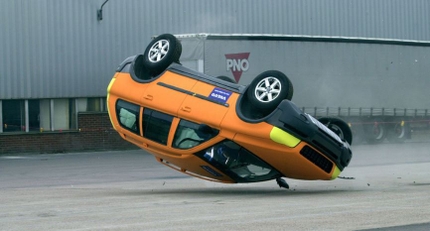- 02/02/2017
- 3 Min Read
- By: Nicolas Siemsen
Using Free Service Manuals for Mercedes-Benz W123 and W124 Models
Whenever an automotive manufacturer produces a vehicle, they publish what is called a Factory Service Manual (FSM). The FSM provides step-by-step procedures for completing maintenance and repair tasks on that make or family of cars.
The FSM is used by the technicians at the dealership to perform warranty repairs and is made available to independent repair shops. Usually this manual is also made available for purchase to the general public.
While the FSM was typically an expensive set of paper manuals, or these days a pricey software purchase, if you own an older Mercedes-Benz you will be excited to know that Daimler AG provides free online versions of the FSM for several of their chassis.
Before going any further, it is worth reviewing the upsides and downsides of using an FSM, especially on an older car.
The Good
The FSM will cover in detail the correct procedure for removal, replacement, and repair of many components within your vehicle. It will usually cover details such as proper tightening torques and clearances that may not usually be mentioned in DIY guides written by shade tree mechanics. If you want to learn how to do something "the right way" the FSM is the place to look.
The Bad
FSM's are heavily influenced by the engineers who designed these cars and they always assume a best case scenario - namely working on a car that is nearly new, with all the special factory tools at hand, and brand new genuine parts on the shelf. It will not take in to account the challenges that can arise from age, rust, corrosion, neglect, abuse, prior attempts at repair, defective aftermarket parts, sourcing of discontinued parts from the junkyard, etc. Finally, the processes tend to be written in "engineering speak" which is fine for trained professionals but which can be confusing for those of you setting out to repair something for the first time.
So with that in mind, take advantage of the FSM for your car but know that you will still find much value in online resources such as the FCP Euro DIY blog.
Now, back to the free online FSM tool for the Mercedes W123. Below is a step-by-step guide on how to access and use the FSM tool. There is an identical tool for the W124 chassis that this guide applies to as well. The FSM for the 201 chassis is also available free online but is designed in a much more straightforward manner, and should prove self-explanatory.
Step 1
To being, navigate to www.startekinfo.com which is shown below:
Step 2
In the menu on the left-hand side click on MB Workshop Resources:
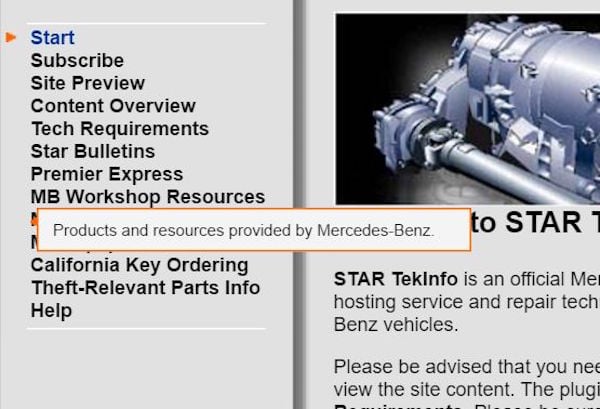
Step 3
In the sub-menu click on Service Manual Library CD/DVD (note that the FSM's for the W123 and W124 were once distributed as a CD with an HTML based navigation that linked to PDF files on the disc - this online tool is basically a copy of that CD's contents, simply hosted on a server instead).
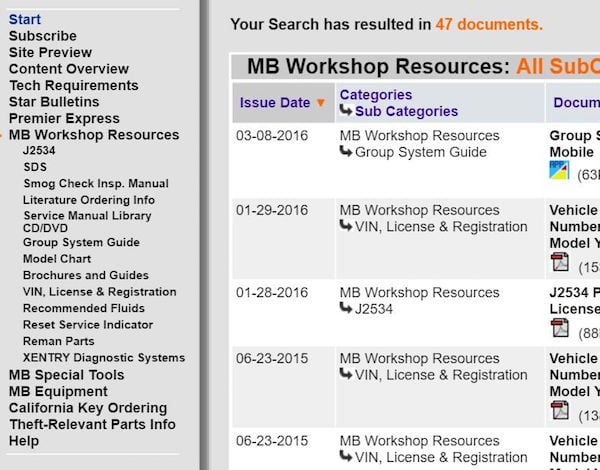
Step 4
Click on Model 123 Service Library
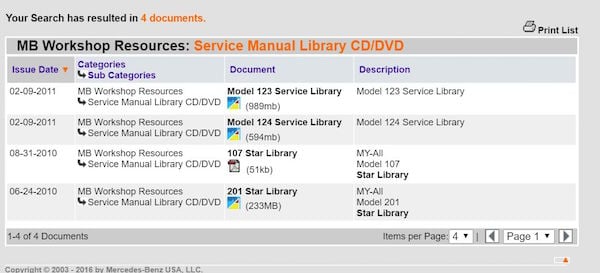
Step 5
From here the tool will then open in your browser. You will see what is the beginning of the HTML based navigation from the old CD version. Most of the models I have dealt with are on "Disc 2" so I will click that, but if your model is instead on Disc 1 it will notify you to change discs at a later step.
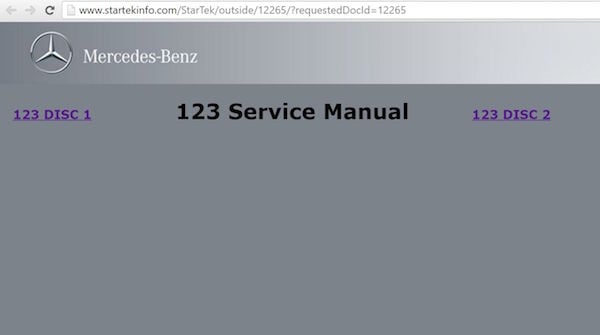
Step 6
Wait for the Mercedes star animation to finish, and when it stops click on the star.


Read and accept the terms of use.

Step 8
Click continue in the lower right corner.
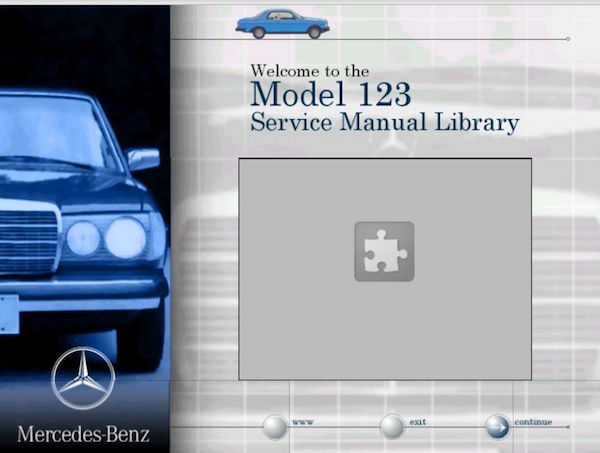
Step 9
At long last, you are able to view the catalog of available content for the various cars within the W123 family. You can click on the year of your car under the model heading to proceed. There are two pages - if you do not see your model and year on this page, click on the "more" button. Note that, on page 2, those models with turbo diesel engines are marked with an asterisk. For this guide, we are going to look up content on a 1985 Mercedes 300D so click "more", then click on '85 underneath the 300D* heading. Also note that this is the point at which, if your model and year was stored on another "disc", you would receive a message telling you to switch to Disc 1. Return to step 5 if that is the case.
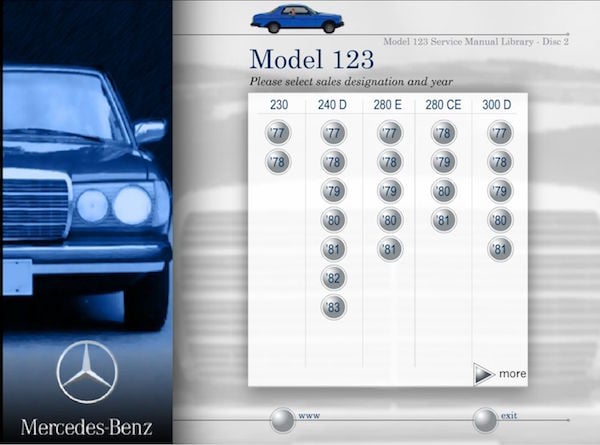
Step 10
Click continue on the model and year confirmation screen.
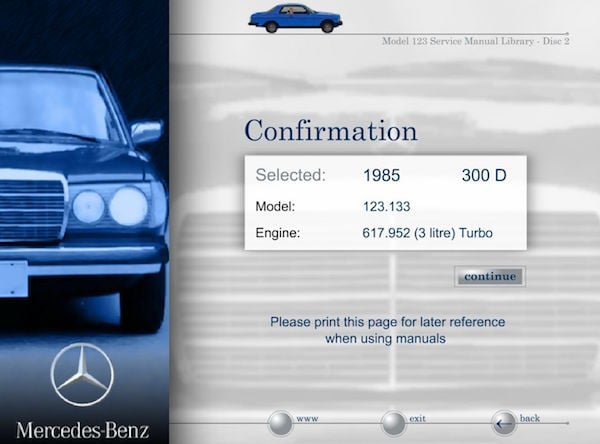
Step 11
Now you can navigate through the manual's various sections. Note that some sections, like the maintenance manual and owners manual, may not have much if any content as unfortunately those PDF's were not uploaded to this tool. You will have to track down that content elsewhere. However, the engine manual, chassis manual, and other important information is readily available. Click on Engine Manual, for the sake of the next steps.
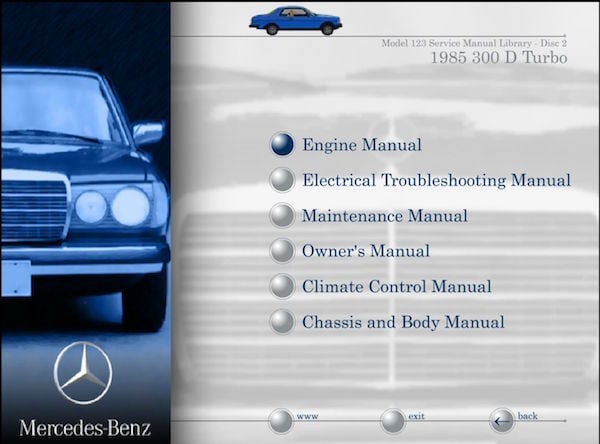
Step 12
Within each manual you will find a menu of categories. Each category contains a list of links to sections from the FSM. There may be more than one page of categories which you can navigate with the "more" and "back" buttons. Click "more" to see the next page as you continue to the next step.
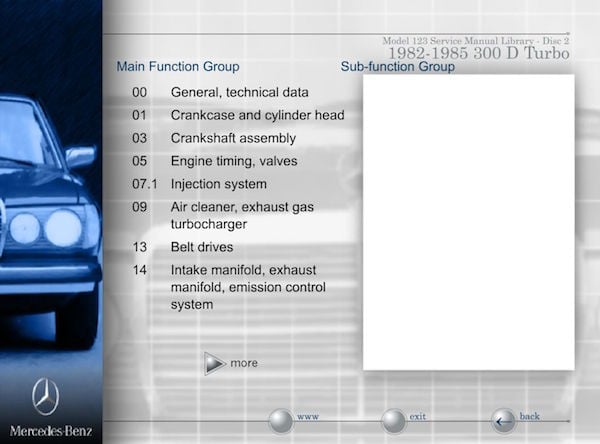
Step 13
Now, click on a category, in this case 22 Engine Suspension (which refers to the various mounts and shocks used to absorb vibration from the W123 diesel engine). After clicking on the category you will see a set of links that open in the previously blank box to the right. These links lead to each individual section of the FSM. There may be several pages of sections available. If so, navigation arrows will appear below the list in the white box. Click on "211 Removal and installation of front engine mount".
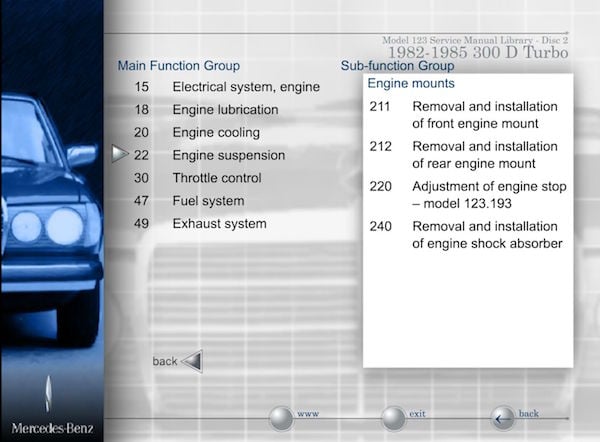
Step 14
Having clicked on a section link a PDF will open either in your browser or in your default PDF viewer. The PDF will contain all the information from the FSM about the section you selected.
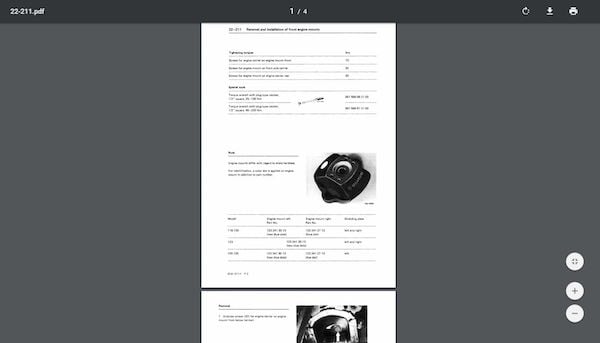
You have now successfully reached the type of content you will find in the FSM.
Let's take a look at some of the typical information you will find in each section of the FSM. Here is a direct link to the particular section we navigated to in this guide so you can follow along.
Specifications for torque, clearance, etc.
One of the first things you will see in each section of the manual is a list of specifications, usually related to tightening torques for the various bolts used in that section.

The tightening torques will be displayed in the metric measurement of newton meters (Nm). Most of us DIY mechanics in the United States likely have a torque wrench that reads in the English measurement of foot-pounds (lb-ft). The conversion is easy - divide the Nm measurement by 1.3558 to get the lb-ft equivalent. To use an example from above, 70 Nm is equal to just under 52 lb-ft.
Special tools
Next, you will see a list of any special tools required to complete the job including part numbers for the tools that Mercedes made and supplied to their technicians at the time. These days, you will usually find it easier and less expensive to get these special tools from elsewhere - torque wrenches can be purchased from FCP Euro, for example. Shop Torque Wrenches at FCP Euro

Notes
Some FSM sections will contain special notes, in this case a table showing the various combinations of colored dots used to denote the hardness and related application of different mounts.

Step-by-step instructions
Finally, you will find yourself at the step-by-step part removal and installation instructions.
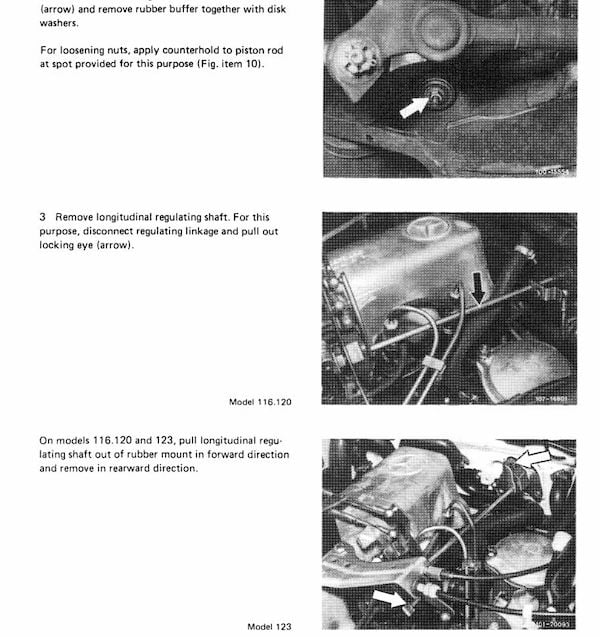
With that, you now know how to make use of the free FSM's provided for older Mercedes-Benz vehicles. Hopefully this helps you tackle your next project!

